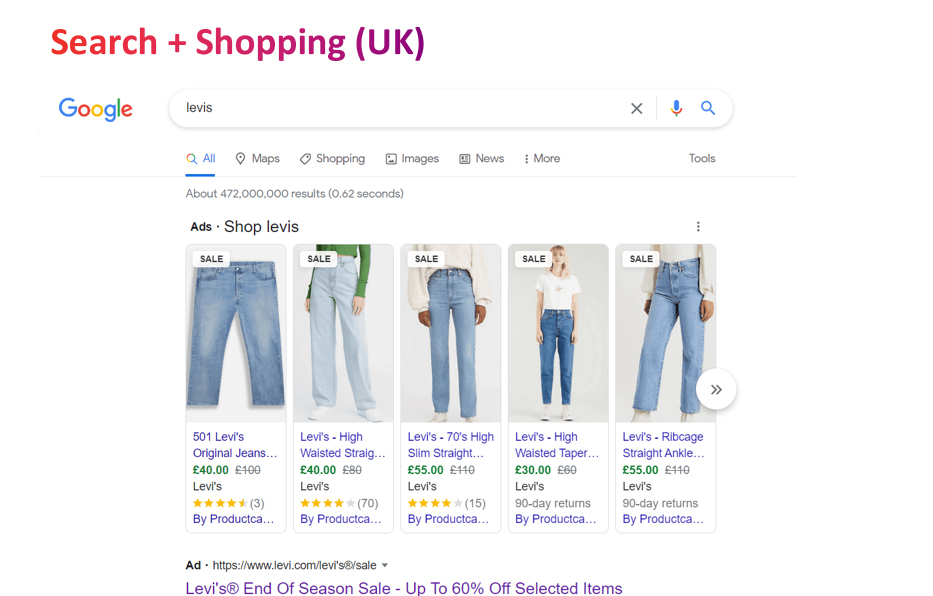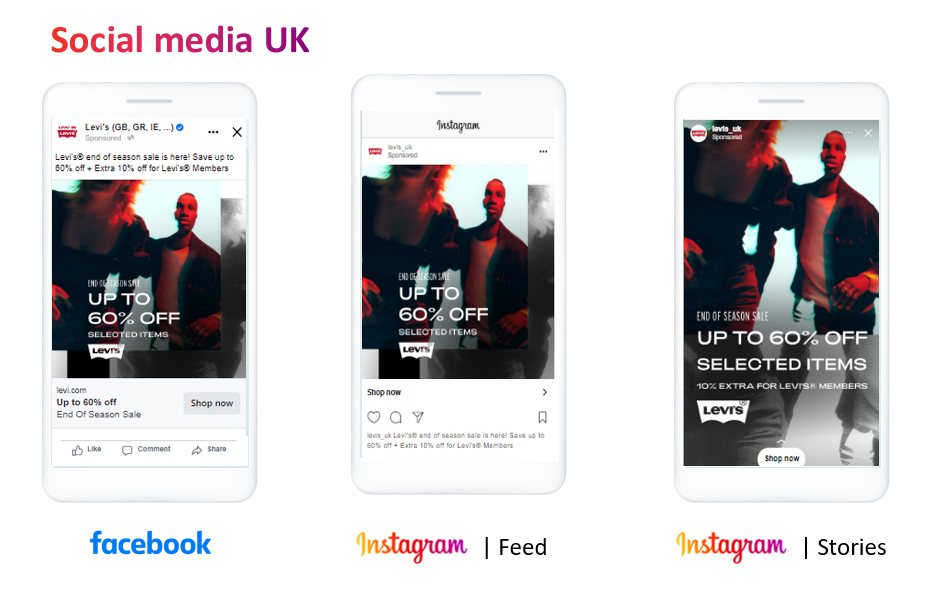BLOG

13/10/2022
When Bavarian-born immigrant Levi Strauss started importing a tough cotton fabric from the French town of Nimes, he’d never have imagined the multinational success story his name would become. 2,800 stores later, Levi Strauss & Co grosses over $5bn as of the world’s best-known and most-loved brands.
But he might have recognized the principle that’s driven the company since its start in 1853: effective use of data.
When one of Strauss’s partners noticed his denim-patched work pants kept tearing in the same places, it was a data point. When he suggested riveting that seam instead of sewing it, it was an insight from data. And when Levi Strauss & Co started making entire pants from the revolutionary fabric, it was an opportunity to profit from an emerging customer segment – America’s expansion westwards, selling to cowboys, factory workers, and miners on a promise of durability. (To this day, 100-year-old garments turn up in abandoned mines across Nevada and California – some still wearable.)
Today, Levi’s is among the most innovative and perceptive users of data on the planet – not simply gathering separate datasets, but integrating and connecting them to maximize value from its entire customer base. In its stores, on its own site, and across the web. This article explores their successes so far and their vision for the future – and how a multidisciplinary team from Relay42 and OMD, the world’s largest media network, is making that future happen.
Making data fit: a plan for connecting and managing data across channels
As with any large company spanning multiple geographies, management of data is a Hard Problem. The critical difference with Levi’s: they accepted and recognized this. They’d been striving for some time to find a solution that could give them a unified view of the customer – not just when they shopped online, but when they browsed the web, searched for clothing, and visited physical stores (where sales clerks are trained to ask every customer for an email address).
They’d tested other data platform solutions but found them wanting. While it let them see data from different sources, turning those views into actual actionable solutions turned out to be much harder – and missed some important must-haves, like meeting regulatory compliance in the way it treated data. It was time for a change.
Fortunately, Levi’s in London enjoyed an excellent relationship with media agency OMD – known for its data smarts. They tasked the agency with tracking down a solution, and with rolling it out across an initial three countries with more to follow. The solution? Relay42’s Customer Data Platform.

There was, however, one problem. Just as in Gold Rush days a few weeks’ delay meant the difference between striking it rich and going broke with just the jeans on your backside, Levi’s and the Relay42/OMD team had just a short time to get things rolling. And the clock was ticking.
Quick change: a challenge for rollout schedules
Despite the promise of Big Data, relatively few companies maximize the use of even the data already within their systems – much less connect it to other sources like offline sales. Knowing where the data is and how to get access to it is one of the biggest problems in all data science.
Relay42 suggested a SPRINT framework – an action-focused project management methodology that aligns the goals of different teams. Over several workshops with Levi’s, OMD and Relay42, they agreed the core goal: the connection of centralized data within Levi’s to all digital sources, including offline receipts and site search advertising – with a singular focus on one person: the customer.
The Gold Rush: 8 weeks for onboarding
Relay42’s Customer Data Platform (CDP) was clearly capable of connecting together all relevant data and bringing it together in the same place – and both the marketer and agency were impressed by their stance as market-savvy data experts. A plan quickly came together.
The Relay42 platform would enable consistent data collection across digital properties like brand and retail sites initially in the UK, Germany, and France. It would also be able to unify datasets across other digital entities (the web, email, CRM, and mobile) and export meaningful audience segmentations to the wider adtech and martech ecosystem, so Levi’s marketers could make use of it. This would also attribute sales to the correct source, automate many campaigns within CRM, and make results easily communicable in visual reports and charts.
The team’s plan checked all these boxes, with a comprehensive set of use cases spanning many customer journeys and uniting the data from each at multiple touchpoints. Use cases included a customer searching the web for retailers, people browsing Levi’s own site, and social media users including Facebook. It also went offline: every time an email address is collected at checkout, it goes into the CDP for matching and entity resolution.
These use cases were then implemented for Levi’s marketing team, working on a range of success metrics. If a customer’s buying bluejeans, it’s common for them to want T-shirts and socks too – so appropriate ad creative was developed for each case. (Ayers divides the journey on the Levi’s website into four stages: using site, showing interest in products, adding a product to their basket, and completing the purchase.)

The team also paid attention to some less common use cases, like when not to show an ad to a customer. Because if a customer’s at the wrong stage of his/her journey (known as “propensity to buy”) too much advertising is just an annoyance. Sometimes it’s best to suppress outreach at a given touchpoint, and let the customer draw breath.
Thanks to a great working relationship, the SPRINT framework – and, presumably, a great deal of coffee – OMD, Levi’s, and Relay42 completed the implementation in less than three months, in time for Levi’s next campaigning season.

Riveting results: connected data strikes it rich
Despite barely half a year since their initial brief, the team is already seeing positives in the data. With 6.6m records imported into the Relay42 platform, the first 3 markets now have a single view of the customer, informing programmatic campaigns across search and shopping channels, offline data keyed by email address, and tailored ads across social media including Facebook, Instagram, and YouTube.
When compared to Conversion Rate averages, uplift was particularly strong – up 115% in online sales from brand search (i.e. people who searched the web then went on to buy). 20% of all conversions now come from the platform. This has also prompted Levi’s to improve its strategy for CPC advertising (such as Google) to extract maximum value from various audience segments.
On Social media use cases (Facebook & Instagram), the UK was a standout. Across a combination of all campaign audiences, the Relay42 platform delivered a 377% uptick in CVR and a 45% in ROI. France and Germany followed – with CVRs of 249% and 154% respectively.
On Programmatic use cases, Relay42 audiences showed encouraging results in look-a-likes audiences with up to 326% CPM decrease in Germany, and a 65% CPC decrease in the United Kingdom.

What’s interesting is how little focus the team has on traditional demographics of age and income. To Levi’s, its customer segment are psychographics, not M/F and ABC1’s. Which Levi Strauss would have understood. Anyone can be a customer of great quality denim.
Expanding west: what’s next for Levi’s?
Like a pair of 501s, the program shows no signs of wearing out. With Levi’s own sites and broader site search in the bag, eyes are now turning to affiliates: retailers selling the company’s products outside the 2,800 physical Levi’s stores. Because their data can be useful, too.
They’re looking to add more social channels to cover more customer groups, like Amazon and TikTok – connectors already available in the Relay42 platform. From the UK, Germany, and France already in their (watch) pocket, six new Europeans are joining the fray: Italy, Spain, Belgium, Poland, Sweden, and the Netherlands.
But the most far-reaching ambitions go even further. The Levi’s/OMD collaboration is the first customer for Relay42’s new AI module. On the platform, machine learning intelligence will predict which products will resonate most strongly with given audience groups, defining new segments and behavior in the process.
This answers a plus-sized goal: to be the world’s greatest expert on customer behavior over the next decade. An ambition of which a certain fabric importer in 1853 would have been very proud.
CONCLUSION: looking for the next rich seam
Long a leader in casualwear, Levi’s is now a leader in smart use of data too – not by blasting its customers with endless ads, but by engaging them at critical touchpoints with information and options it already knows they’ll like. It’s Ayers’ stated goal to know more about each customer’s buying behavior than they do themselves.
At Relay42 we’re delighted with the results Levi’s is getting from our platform – and we’re excited about the possibilities of what’s to come. So our thanks go to the team at OMD for sharing their success story with us. Here’s to the next 10 years!


